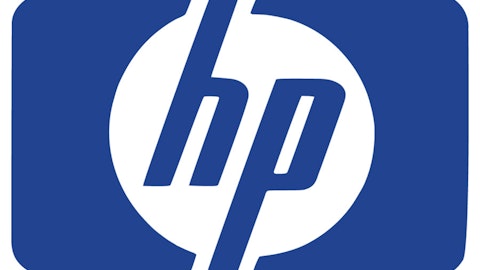In my most recent coverage of semiconductor company QUALCOMM, Inc. (NASDAQ:QCOM), I had spelled out the fundamentals that make this stock a great addition to your portfolio. And now it seems the party’s reaching a new high, as the company rewards its loyal investors with a whopping 40% increase in its quarterly dividend, coupled with a share buyback program worth $5 billion. What makes its management so confident about its near-term prospects?
The answer lies hidden in a host of factors, ranging from a faster design cycle, a solid headstart with regard to the ‘integration’ factor, and a certain country in the Far East. Even better, Qualcomm is one of the few companies promising a bright future, despite the prevalent macroeconomic headwinds.
The winning edge
QUALCOMM, Inc. (NASDAQ:QCOM) essentially makes its money from two areas – its licensing technology and the sale of wireless baseband chips. And it’s strategically positioned itself to benefit in both these areas from the boom in smartphones. The competition’s finding that combination very hard to beat, leading market biggies like Apple, Samsung, and HTC to choose Qualcomm’s chips. Let me explain why this should continue to hold true for Qualcomm for quite some time.

The ‘LTE’ factor
One of the reasons why QUALCOMM, Inc. (NASDAQ:QCOM)’s processors are found in the majority of the world’s smartphones is its commanding lead in the realm of Long Term Evolution, or LTE, wireless technology. In fact, as much as 86% of the roughly 47 million LTE-enabled chips that were shipped in the previous year were manufactured by Qualcomm.
While competitors like NVIDIA Corporation (NASDAQ:NVDA), Intel Corporation (NASDAQ:INTC), and Broadcom Corporation (NASDAQ:BRCM) are huffing and puffing toward perfecting their mostly first generation LTE-integrated chipsets, Qualcomm has already launched its third generation of 4G LTE chips. Best of all, these chips should show up in devices by this year itself, which should be a real game changer.
LTE is the defining factor in markets such as the US and other developed nations, which are witnessing the start of a barrage of 4G LTE-compatible handsets. Add to it the company’s claims of having secured over 50 design wins for its Snapdragon 600 and 800 lines of processors, and you have a win-win situation for investors for at least the next two quarters, even by conservative estimates. Furthermore, the relatively short time gap between the launch of its Snapdragon 600 and 800 series speaks volumes about QUALCOMM, Inc. (NASDAQ:QCOM)’s ultra-fast design cycle, a pace slow-moving behemoths like Intel will find hard to match.
NVIDIA’s grey spot
At this point, let’s take a moment to glance through the competition individually, and see where they are placed vis-à-vis Qualcomm.
To start with, peer NVIDIA is a formidable company to contend with, particularly regarding its reputation in the graphics processor space. While Qualcomm dominates the show in the field of smartphone processors, NVIDIA’s made its mark in the realm of tablets.
No wonder, then, that Google’s Nexus 7 and Microsoft’s Surface RT tablets sport NVIDIA’s Tegra line of processors. The company’s newly introduced Tegra 4i or ‘Grey’ line of processors give it the much-needed LTE integration into its chipsets.
The only small problem is with timing. Tegra 4i chips should start showing up in devices no earlier than the end of this year or the beginning of the next, which again places QUALCOMM, Inc. (NASDAQ:QCOM) one step ahead in the race. Till then, NVIDIA should remain busy with the transition into Tegra 4, which incidentally doesn’t include LTE integration.
Intel’s issues with speed
With PCs fast becoming a part of a sunset industry, processor heavyweight Intel has changed gears to move into the realm of smartphones and tablets, but with little success so far. This is reflected in its less-than-1% share of the worldwide mobile chip market, as per research firm Strategy Analytics.
At the same time, Intel has to contend with the high costs of maintaining its own fabs or foundries for manufacturing chips. While that is an advantage in terms of seamless integration, it also proves to be less cost-effective against Qualcomm’s strategy of contracting with foundry partners such as Taiwan Semiconductor.
Although Intel’s newly introduced Clover Trail+ processors look impressive, they fail to provide integrated LTE connectivity. In any case, Clover Trail+ processors are not showing up in devices anytime soon.
The Broadcom challenge




